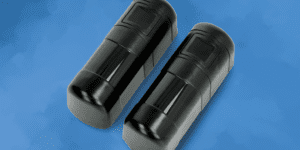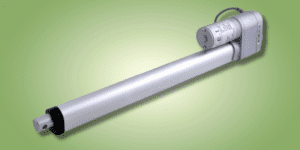Spis treści:
- 1 What is the CR123A?
- 2 Advantages of CR123A batteries
- 3 How is the CR123A lithium battery constructed?
- 4 Application of CR123A lithium batteries
- 5 What materials are lithium batteries made of?
- 6 Stages of charging lithium batteries
- 7 Differences between lithium and alkaline batteries
- 8 Use of alkaline and lithium batteries
- 9 Differences between lithium and zinc-carbon batteries
- 10 Recycling lithium batteries
CR123A is the abbreviation for a lithium battery used to power, among other things. flashlights, cameras, smoke detectors and alarm systems.
What is the CR123A?
CR123A are batteries made of, among other things. Of high quality lithium. They are ideal for stable power supply to devices that require relatively high power to operate. Other battery names include EL123A and DL123A. Their voltage rating is 3 volts, while their capacity usually ranges from 1300 mAh to 1800 mAh. The maximum current, on the other hand, depends on the specific battery manufacturer. Mostly it is one or a few amps (e.g., for very short pulses). The physical dimensions of the cell are as follows: 16.8 mm in diameter and 34.5 mm in length. The battery weighs about 17 grams.
Advantages of CR123A batteries
CR123A lithium batteries are capable of delivering a large amount of energy in a short period of time, making them versatile. They are characterized by a wide operating temperature range of -20℃ to + 60℃ (the range may vary from a specific manufacturer or even battery model).
How is the CR123A lithium battery constructed?
CR123A lithium batteries are made up of several components. The first is the anode, usually made of graphite or another mineral that has the ability to store calcium ions. The second element is a cathode made from lithium oxide. The third element is the electrolyte, or lithium salts, which have been dissolved in a special organic solvent. The next component is the separator, which is a membrane that does not conduct electricity. The membrane is a separator that separates the cathode and anode.
Application of CR123A lithium batteries
Due to their parameters and characteristics, CR123A lithium batteries are distinguished by their various applications. They can be seamlessly used to stably power compatible cameras, LED flashlights of varying wattage, security systems, alarms, smoke detectors, medical equipment and even small drones.
What materials are lithium batteries made of?
The materials used to make lithium batteries are primarily lithium, which is the main component of both the anode and cathode, as well as various metals and chemicals used to make the cathode. The electrolyte usually consists of a lithium salt dissolved in an organic solvent.
Stages of charging lithium batteries
A special charger is required to replenish rechargeable lithium batteries. This type of device divides the entire charging process into stages, thus ensuring efficient and, above all, safe charging of secondary cells.
The first stage is called pre-charge. When the battery voltage is low, the charger starts supplementing the energy with a small current, the level of which does not exceed 10% of the nominal current. Then, once the battery reaches a certain voltage, the device starts the next stage, which is DC charging. The charger delivers current to the secondary cell at a constant level, so the battery voltage steadily increases.
In the next step, the battery is charged with a constant voltage. For lithium-ion batteries, this stage begins when the voltage reaches about 4.2 volts.
This part of charging involves maintaining a constant voltage and lowering the charging current at the same time. When the charging current drops to a very low level (e.g., less than 3% of the nominal current), then the energy replenishment of the secondary cell is terminated.
Differences between lithium and alkaline batteries
The differences between lithium and alkaline batteries are due to, among other things. Of the materials that were used in their production. One of the most important differences is tension. Lithium cells are mostly distinguished by their higher voltage (e.g. 3 V) compared to alkaline batteries (about 1.5 V). Another difference is energy density, which should be understood as the ability to store a certain amount of energy. Lithium batteries have a higher energy density than alkaline batteries. This means that the amount of energy stored in lithium and alkaline batteries of the same size is greater in lithium cells.
Another difference is the weight. Alkaline batteries are generally lighter than lithium batteries. The next important difference is in the life of the cells, that is, the ability to maintain the original electrical parameters per unit time. Lithium cells have a significantly longer life. In addition, they are less prone to the undesirable phenomenon of self-discharge than alkaline cells. In addition, lithium batteries are generally more expensive than alkaline models.
Use of alkaline and lithium batteries
Lithium batteries are commonly used to stably power devices that require high power and long cell life to operate. Alkaline batteries, on the other hand, are used to power devices that require relatively low power to operate (such as TV remote controls).
Differences between lithium and zinc-carbon batteries
The main differences between zinc-carbon and lithium batteries include chemical composition. In addition, lithium cells are distinguished by higher voltage, higher energy density and longer life, compared to zinc-carbon batteries. Other differences include the effect of self-discharge and susceptibility to varying temperatures. These differences again fall in favor of lithium cells.
The most important advantage of zinc-carbon batteries is their low price, which makes them still very popular.
Recycling lithium batteries
Used batteries (regardless of their type) should be disposed of in specially marked containers. They can be found among others. In stores that offer different types of cells.
Recycling lithium batteries is a complicated process divided into several stages. To begin with, the lithium cells are collected and sorted. Subsequent steps include unloading, disassembly (e.g., from electronic device housings). Shredding and recovery of valuable materials is then performed. In the final stages, the extracted material undergoes purification and refining.
How useful was this post?
Click on a star to rate it!
Average rating 0 / 5. Vote count: 0
No votes so far! Be the first to rate this post.







